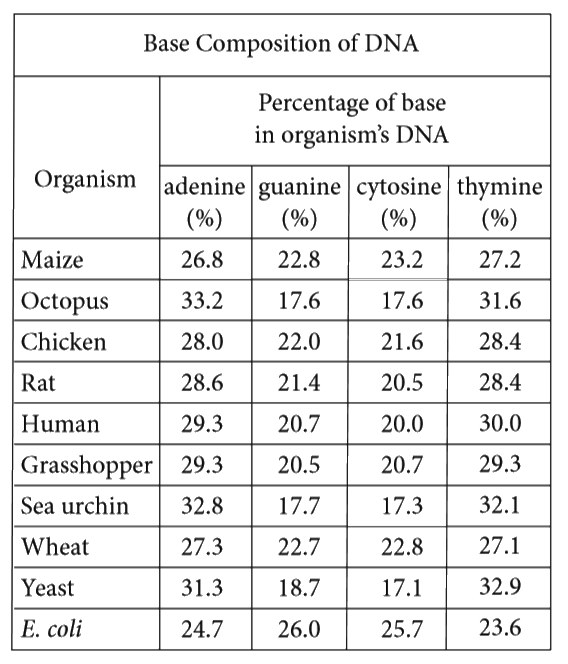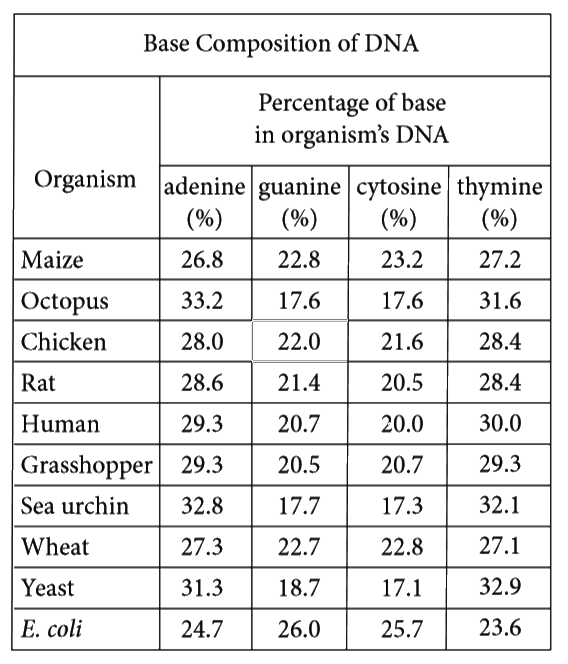Angiosperm flowers may be monoecious, clestogamous or show self-incompatibility. Describe the characteristic features of each one of them and state which one of these flowers promotes inbreeding and outbreeding respectively.
To answer the question regarding the characteristics of monoecious, cleistogamous flowers, and self-incompatibility in angiosperms, and to determine which promotes inbreeding and outbreeding, we can break down the solution into clear steps:
1. Definition of Monoecious Flowers:
- Monoecious flowers are those that have both male (anther) and female (stigma) reproductive structures within the same flower. This means that a single plant can produce both types of gametes.
2. Characteristics of Monoecious Flowers:
- Bisexual: Each flower contains both male and female parts.
- High Self-Pollination Potential: Since both reproductive organs are present in the same flower, there is a high likelihood of self-pollination occurring.
- Promotes Inbreeding: Due to the possibility of self-pollination, monoecious flowers primarily promote inbreeding.
3. Definition of Cleistogamous Flowers:
- Cleistogamous flowers are those that remain closed and do not open to expose their reproductive structures.
4. Characteristics of Cleistogamous Flowers:
- Closed Structure: The flowers do not open, which prevents access to external pollen.
- Self-Pollination: Since the anthers and stigmas are enclosed, the only pollen available for fertilization comes from the same flower.
- Promotes Inbreeding: Like monoecious flowers, cleistogamous flowers also promote inbreeding due to self-pollination.
5. Definition of Self-Incompatibility:
- Self-incompatibility is a mechanism in which a plant can prevent fertilization by its own pollen. This is often mediated by chemical signals that inhibit the germination of self-pollen on the stigma.
6. Characteristics of Self-Incompatibility:
- Chemical Dialogue: When pollen from the same plant lands on the stigma, a chemical interaction occurs that prevents the pollen from germinating.
- Encourages Cross-Pollination: Only pollen from different plants can fertilize the ovules, promoting genetic diversity.
- Promotes Outbreeding: This mechanism is an effective outbreeding device as it encourages cross-pollination.
Summary of Inbreeding and Outbreeding:
- Inbreeding Promoters:
- Monoecious flowers
- Cleistogamous flowers
- Outbreeding Promoter:
- Self-incompatibility
- Monoecious flowers are those that have both male (anther) and female (stigma) reproductive structures within the same flower. This means that a single plant can produce both types of gametes.
- Bisexual: Each flower contains both male and female parts.
- High Self-Pollination Potential: Since both reproductive organs are present in the same flower, there is a high likelihood of self-pollination occurring.
- Promotes Inbreeding: Due to the possibility of self-pollination, monoecious flowers primarily promote inbreeding.
- Cleistogamous flowers are those that remain closed and do not open to expose their reproductive structures.
- Closed Structure: The flowers do not open, which prevents access to external pollen.
- Self-Pollination: Since the anthers and stigmas are enclosed, the only pollen available for fertilization comes from the same flower.
- Promotes Inbreeding: Like monoecious flowers, cleistogamous flowers also promote inbreeding due to self-pollination.
- Self-incompatibility is a mechanism in which a plant can prevent fertilization by its own pollen. This is often mediated by chemical signals that inhibit the germination of self-pollen on the stigma.
- Chemical Dialogue: When pollen from the same plant lands on the stigma, a chemical interaction occurs that prevents the pollen from germinating.
- Encourages Cross-Pollination: Only pollen from different plants can fertilize the ovules, promoting genetic diversity.
- Promotes Outbreeding: This mechanism is an effective outbreeding device as it encourages cross-pollination.
- Inbreeding Promoters:
- Monoecious flowers
- Cleistogamous flowers
- Outbreeding Promoter:
- Self-incompatibility
Similar Questions
Knowledge Check
Which one of the following pairs of animals are similar to each other for the feature stated against them ?
APteropus and Ornithorhyncus - viviparityBGarden lizard and crocodile - three chambered heartCAscaris and Ancylostoma - metameric segmentationDSea horse and flying fish- cold blooded (poikilothermal)The chemical formula of deoxyribonucleic acid
(DNA) is now well established. The molecule is a
very long chain, the backbone of which consists of a
regular alternation of sugar and phosphate groups.
5 To each sugar is attached a nitrogenous base, which
can be of four different types. Two of the possible
bases—adenine and guanine—are purines, and the
other two—thymine and cytosine—are pyrimidines.
So far as is known, the sequence of bases along the
10 chain is irregular. The monomer unit, consisting of
phosphate, sugar and base, is known as a nucleotide.
The first feature of our structure which is of
biological interest is that it consists not of one chain,
but of two. These two chains are both coiled around
15 a common fiber axis. It has often been assumed that
since there was only one chain in the chemical
formula there would only be one in the structural
unit. However, the density, taken with the X-ray
evidence, suggests very strongly that there are two.
20. The other biologically important feature is the
manner in which the two chains are held together.
This is done by hydrogen bonds between the bases.
The bases are joined together in pairs, a single base
from one chain being hydrogen-bonded to a single
25 base from the other. The important point is that only
certain pairs of bases will fit into the structure.
One member of a pair must be a purine and the other
a pyrimidine in order to bridge between the two
chains. If a pair consisted of two purines, for
30 example, there would not be room for it.
We believe that the bases will be present almost
entirely in their most probable forms. If this is true,
the conditions for forming hydrogen bonds are more
restrictive, and the only pairs of bases possible are:
35 adenine with thymine, and guanine with cytosine.
Adenine, for example, can occur on either chain, but
when it does, its partner on the other chain must
always be thymine.
The phosphate-sugar backbone of our model is
40 completely regular, but any sequence of the pairs of
bases can fit into the structure. It follows that in a
long molecule many different permutations are
possible, and it therefore seems likely that the precise
sequence of bases is the code which carries the
45 genetical information. If the actual order of the bases
on one of the pair of chains were given, one could
write down the exact order of the bases on the other
one, because of the specific pairing. Thus one chain
is, as it were, the complement of the other, and it is
50 this feature which suggests how the deoxyribonucleic
acid molecule might duplicate itself.
The table shows, for various organisms, the percentage of
each of the four types of nitrogenous bases in that
organism’s DNA.

Adapted from Manju Bansal, “DNA Structure: Revisiting the
Watson-Crick Double Helix.” ©2003 by Current Science Association,
Bangalore
25. The authors’ main purpose of including the information about X-ray evidence and density is toAestablish that DNA is the molecule that carries the genetic information.Bpresent an alternate hypothesis about the composition of a nucleotide.Cprovide support for the authors’ claim about the number of chains in a molecule of DNA.Dconfirm the relationship between the density of DNA and the known chemical formula of DNA.The chemical formula of deoxyribonucleic acid
(DNA) is now well established. The molecule is a
very long chain, the backbone of which consists of a
regular alternation of sugar and phosphate groups.
5 To each sugar is attached a nitrogenous base, which
can be of four different types. Two of the possible
bases—adenine and guanine—are purines, and the
other two—thymine and cytosine—are pyrimidines.
So far as is known, the sequence of bases along the
10 chain is irregular. The monomer unit, consisting of
phosphate, sugar and base, is known as a nucleotide.
The first feature of our structure which is of
biological interest is that it consists not of one chain,
but of two. These two chains are both coiled around
15 a common fiber axis. It has often been assumed that
since there was only one chain in the chemical
formula there would only be one in the structural
unit. However, the density, taken with the X-ray
evidence, suggests very strongly that there are two.
20. The other biologically important feature is the
manner in which the two chains are held together.
This is done by hydrogen bonds between the bases.
The bases are joined together in pairs, a single base
from one chain being hydrogen-bonded to a single
25 base from the other. The important point is that only
certain pairs of bases will fit into the structure.
One member of a pair must be a purine and the other
a pyrimidine in order to bridge between the two
chains. If a pair consisted of two purines, for
30 example, there would not be room for it.
We believe that the bases will be present almost
entirely in their most probable forms. If this is true,
the conditions for forming hydrogen bonds are more
restrictive, and the only pairs of bases possible are:
35 adenine with thymine, and guanine with cytosine.
Adenine, for example, can occur on either chain, but
when it does, its partner on the other chain must
always be thymine.
The phosphate-sugar backbone of our model is
40 completely regular, but any sequence of the pairs of
bases can fit into the structure. It follows that in a
long molecule many different permutations are
possible, and it therefore seems likely that the precise
sequence of bases is the code which carries the
45 genetical information. If the actual order of the bases
on one of the pair of chains were given, one could
write down the exact order of the bases on the other
one, because of the specific pairing. Thus one chain
is, as it were, the complement of the other, and it is
50 this feature which suggests how the deoxyribonucleic
acid molecule might duplicate itself.
The table shows, for various organisms, the percentage of
each of the four types of nitrogenous bases in that
organism’s DNA.

Adapted from Manju Bansal, “DNA Structure: Revisiting the
Watson-Crick Double Helix.” ©2003 by Current Science Association,
Bangalore
24. In the second paragraph (lines 12-19), what do the authors claim to be a feature of biological interest?AThe chemical formula of DNABThe common fiber axisCThe X-ray evidenceDDNA consisting of two chains
(a) Draw a labelled schematic diagram of the transverse section of a mature anther of an angiosperm plant.
(b) Describe the characteristic features of an insect pollinated flower.
View Solution(a) Draw a labelled schematic diagram of the transverse section of a mature anther of an angiosperm plant.
(b) Describe the characteristic features of an insect pollinated flower.
View SolutionWhich one of the following synthetic growth regulators is used to promote synchronized flowering in pineapple
View SolutionWhich one of the following pairs of animals are similar to each other for the feature stated against them ?
View SolutionWhich of the following statements are true (T) and which are false (F): Side opposite to equal angles of a triangle may be unequal. Angle opposite to equal sides of a triangle are equal. The measure of each angle of an equilateral triangle is 600 If the altitude from one vertex of a triangle bisects the opposite side, then the triangle may be isosceles. The bisectors of two equal angles of a triangle are equal. If the bisector of the vertical angle of a triangle bisects the base, then the triangle may be isosceles. The two altitudes corresponding to two equal sides of a triangle need not be equal. If any two sides of a right triangle are respectively equal to two sides of other right triangle, then the two triangles are congruent. Two right triangles are congruent if hypotenuse and a side of one triangle are respectively equal to the hypotenuse and a side of the other triangle.
View Solution
